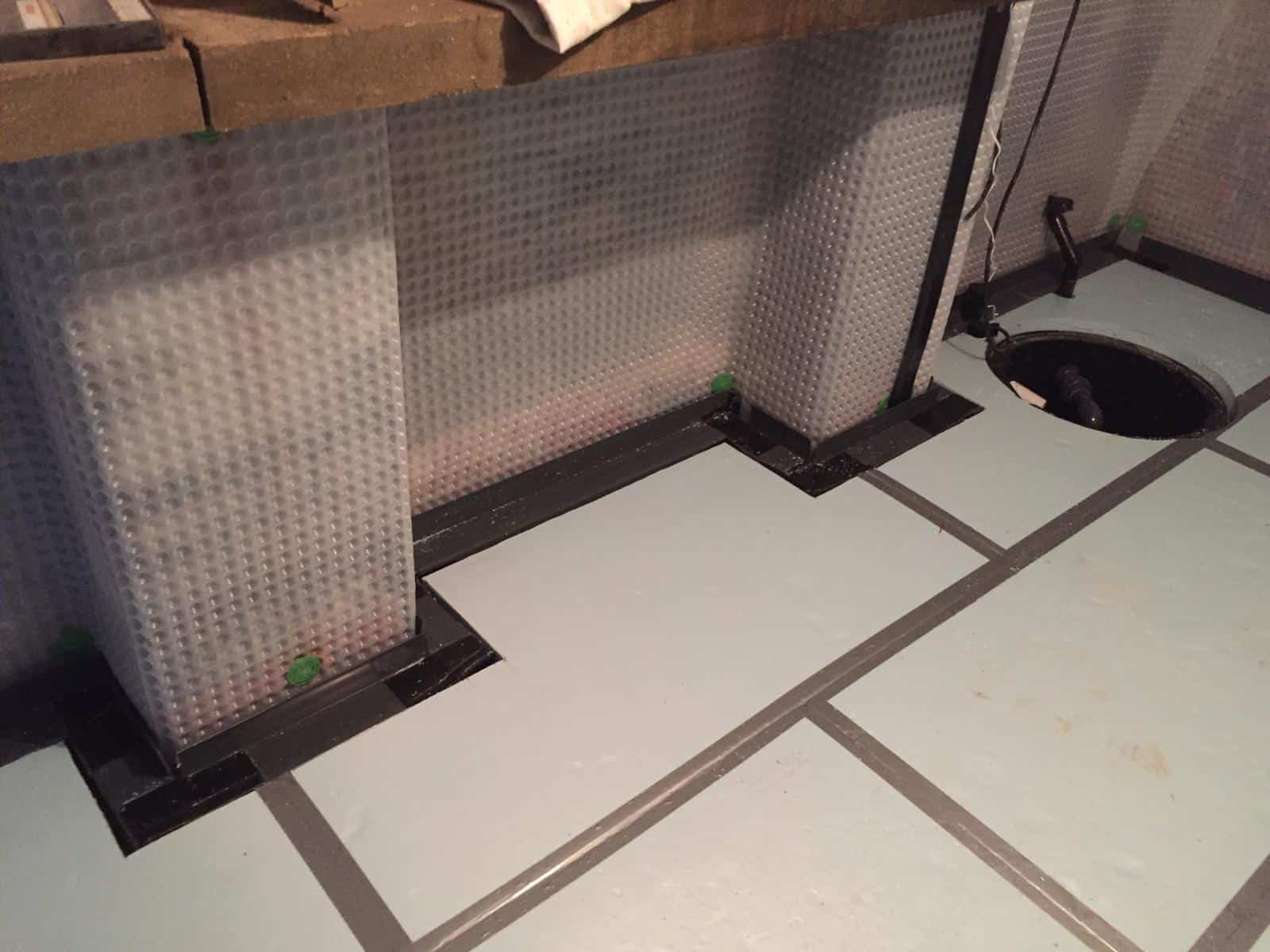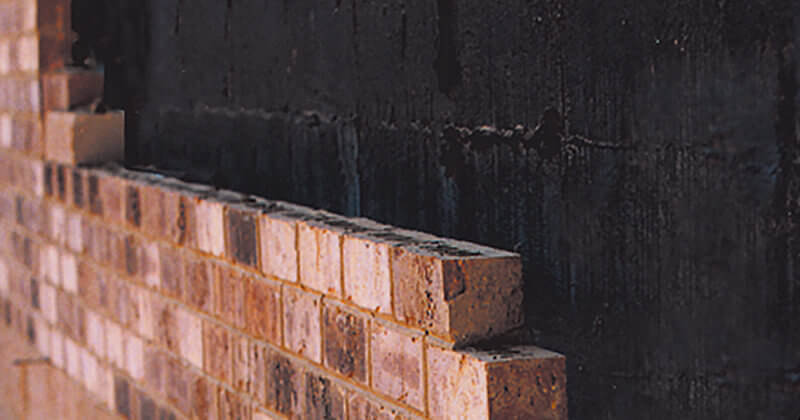Professional advice on dealing with rising damp from damp proofing newcastle
Wiki Article
Discovering the Various Methods and Solutions for Effective Damp Proofing
Moisture in buildings positions substantial difficulties to both architectural honesty and interior air high quality. Various methods and solutions have actually emerged to battle this prevalent problem. From traditional damp-proof membrane layers to ingenious chemical treatments, each approach uses distinct benefits. Recognizing these options is vital for reliable wetness control. Picking the appropriate remedy depends on specific building conditions and needs, triggering more expedition into the most effective damp proofing techniques offered.Recognizing the Causes of Wetness
Although wetness can emerge from different resources, recognizing these reasons is essential for effective remediation. Commonly, dampness originates from three key sources: increasing wet, passing through moist, and condensation. Increasing damp takes place when groundwater takes a trip up-wards with porous products, such as block or rock, typically because of an absence of an effective obstacle (damp removal newcastle). Passing through damp is usually brought on by external aspects, consisting of roofing leakages, malfunctioning gutters, or damaged wall surfaces, permitting water to infiltrate a residential property. Condensation, on the various other hand, arises from excess dampness airborne, usually worsened by inadequate ventilation and temperature level distinctions, resulting in water beads creating on surface areas. Determining these underlying issues is necessary, as each kind of moisture needs a tailored method for removal. Appropriate evaluation helps in determining one of the most effective options, eventually securing the architectural honesty of a building and enhancing indoor air high qualityTypical Damp-Proof Membranes

Chemical Damp-Proofing Solutions
Chemical damp-proofing options provide an ingenious approach to preventing moisture breach in buildings. These approaches commonly involve the application of liquid chemicals that penetrate stonework and develop an obstacle against climbing moist. Commonly utilized chemicals consist of silanes, siloxanes, and other water-repellent representatives that respond with surface area products to create a hydrophobic layer.The application process normally needs drilling openings into the wall surfaces, injecting the chemical service, and enabling it to cure. This approach is specifically beneficial for older frameworks where conventional damp-proof membrane layers may be unwise. In addition, chemical damp-proofing can be less turbulent and a lot more cost-effective than substantial restoration projects.While reliable, these remedies depend on appropriate application and environmental problems for peak performance. Normal maintenance and monitoring are important to assure the durability of the damp-proofing therapy. In general, chemical damp-proofing represents a flexible alternative for safeguarding buildings versus moisture-related damagesDental Caries Wall Surface Building Methods
Cavity wall surface construction strategies provide various advantages, particularly in moisture control and power efficiency. By incorporating an air space in between 2 layers of stonework, these walls efficiently minimize water access while boosting insulation. This mix not only safeguards structures from wetness however also adds to reduced energy usage.Advantages of Dental Caries Wall Surfaces
When taking into consideration effective moist proofing techniques, the benefits of cavity walls stand out prominently. Tooth cavity walls contain 2 different layers, producing an air gap that successfully decreases wetness infiltration. This style minimizes the risk of wetness, as the outer wall surface functions as an obstacle versus rain and water access. Furthermore, tooth cavity wall surfaces improve thermal insulation, which adds to power efficiency by minimizing warm loss. They likewise provide audio insulation, helping to produce a quieter indoor setting. The air void enables for air flow, which helps in moisture control and decreases the probability of mold and mildew development. These advantages not only boost the total comfort of a building however additionally contribute to its long life and architectural honesty.Wetness Control Strategies
Efficient dampness control techniques are vital in cavity wall building and construction to assure long-term defense against moisture. One main method involves the consolidation of weep openings, which promote water drainage from the cavity, preventing build-up. In addition, making use of breathable membrane layers can aid take care of moisture levels while allowing caught vapor to run away. Appropriate placement of insulation is likewise critical, as it should here not block drain courses. Moreover, guaranteeing that the external fallen leaves of the cavity wall surface are constructed with waterproof products improves total resilience. Regular maintenance checks are vital to determine any type of blockages or damages early, guarding the structure's stability. Eventually, a mix of these techniques creates a robust protection against wetness breach in dental caries walls.
Insulation and Power Efficiency
Insulation plays an important function in enhancing energy efficiency within dental caries wall construction. By integrating protecting products, these wall surfaces create a thermal obstacle that minimizes heat loss and decreases power usage. Reliable insulation not just aids maintain a steady indoor temperature level however likewise minimizes the danger of dampness, as it prevents condensation within the wall surface dental caries. Numerous strategies, such as using inflexible foam boards or mineral wool, can be used to attain perfect insulation efficiency. Furthermore, proper installment is important to ensure that voids and spaces are reduced, which can otherwise endanger power efficiency. Ultimately, a well-insulated tooth cavity wall surface adds greatly to total sustainability and lowers cooling and heating costs for property owners.Outside Damp Proofing Approaches
External damp proofing approaches are necessary for securing frameworks from dampness seepage. Two effective techniques consist of the application of water-proof membrane layers and the installment of French drains pipes. These solutions help mitigate water buildup and preserve the stability of buildings.Waterproof Membrane Application
While numerous approaches exist for avoiding dampness ingress, the application of waterproof membranes remains a very reliable outside damp proofing technique. These membranes are usually made from materials such as polyethylene, rubber, or customized asphalt, offering a durable obstacle against water infiltration. The setup procedure entails using the membrane layer to the external surfaces of structures or walls, guaranteeing total insurance coverage to avoid leaks. Appropriate bond and securing at joints are essential to taking full advantage of effectiveness. Water resistant membranes can be applied in numerous types, including liquid finishings and sheet membranes, enabling versatility based upon the certain needs of the structure. This technique not just secures buildings from moisture but also improves their long life and architectural stability.French Drainpipe Installation
One efficient technique for managing groundwater and stopping dampness buildup around a building's foundation is the installation of a French drainpipe. This drainage system contains a trench loaded with gravel and a perforated pipeline that redirects surface area water far from the foundation. Proper installment requires careful preparation, ensuring that the drainpipe slopes away from the structure to assist in suitable water circulation. Additionally, the place of the drain is vital; it needs to be placed in locations susceptible to pooling or excess dampness. Routine upkeep, including clearing up debris from the crushed rock and making sure the pipeline continues to be unobstructed, is vital for long-lasting efficiency. Ultimately, a well-installed French drainpipe can considerably decrease the risk of water-related problems in basements and structures.Inside Waterproofing Strategies
Inside waterproofing techniques are vital for safeguarding a building's inside from dampness seepage and prospective water damage. These approaches commonly include the application of specialized products and techniques made to produce a moisture obstacle within the framework. One common method is making use of waterproof finishes or sealers on wall surfaces and floorings, which avoid moisture from penetrating surfaces.Additionally, installing indoor drainage systems, such as sump pumps, can effectively handle water build-up in cellars and creep areas. An additional method involves the use of vapor barriers, which are mounted to prevent wetness motion from the ground right into living spaces.Moreover, addressing any kind of cracks or spaces in wall surfaces or structures with proper sealants ensures a comprehensive defense versus water invasion. By carrying out these interior waterproofing strategies, residential or commercial property proprietors can considerably reduce the danger of mold and mildew development, architectural damages, and various other moisture-related problems. Proper execution of these strategies is crucial for long-lasting protection and building honesty.Regular Upkeep and Inspection Practices
Normal maintenance and evaluation techniques are important for guaranteeing the long-lasting efficiency of wet proofing services in any type of building. Routine checks make it possible for property owners to determine early indications of dampness breach, such as peeling off paint, mold and mildew development, and musty smells. These indicators can signify underlying problems that call for instant attention.Inspections should be conducted a minimum of annually, concentrating on prone locations like cellars, creep spaces, and exterior wall surfaces. During these assessments, home owners must analyze sealers, water drainage systems, and ventilation to verify they function correctly.Additionally, maintaining seamless gutters and downspouts is essential, as clogged up systems can cause water buildup near the structure. Applying a normal maintenance schedule, in addition to prompt fixings, can significantly extend the lifespan of damp proofing measures and secure the structural integrity of the structure. Positive measures ultimately contribute to the general health and wellness of the living atmosphere.Regularly Asked Questions
For How Long Does Damp Proofing Typically Last?
The duration of moist proofing performance differs, normally lasting between 20 to 50 years. Factors such as application quality, ecological problems, and maintenance techniques considerably affect the long life of the wet proofing treatment.
Can I Damp Evidence My Home Myself?
The private pondered the expediency of DIY damp proofing. With correct research study and the ideal materials, it is feasible. They additionally acknowledged the value of professional advice to guarantee resilient effectiveness and protect against future problems.What Are the Indicators of Inadequate Damp Proofing?
Indications of inefficient moist proofing include relentless stuffy odors, noticeable mold and mildew growth, peeling off paint, wet spots on walls, and wood degeneration - damp proofing newcastle. Property owners should deal with these problems promptly to stop additional damage and wellness worriesDoes Damp Proofing Affect Indoor Air Top Quality?

Just How Much Does Expert Damp Proofing Price?
Professional wet proofing prices differ considerably, usually ranging from $1,000 to $5,000 depending upon the residential or commercial property's dimension, the level of the wet issue, and chosen approaches. Each scenario requires a tailored assessment for exact pricing. Typically, dampness originates from three key resources: climbing wet, passing through moist, and condensation. When considering effective damp proofing techniques, the advantages of tooth cavity walls stand out plainly. Outside damp proofing techniques are important for shielding frameworks from wetness seepage. While numerous approaches exist for preventing dampness ingress, the application of waterproof membrane layers stays a highly effective outside moist proofing method. Indicators of ineffective damp proofing consist of persistent moldy odors, visible mold growth, peeling paint, moist spots on walls, and timber degeneration.Report this wiki page